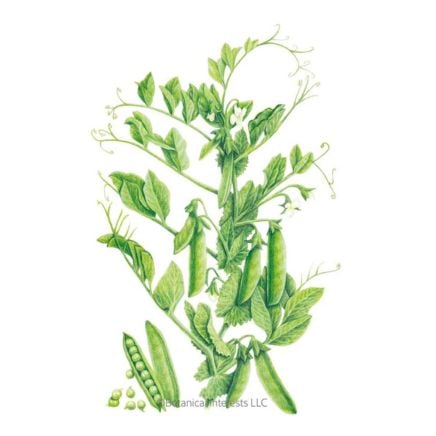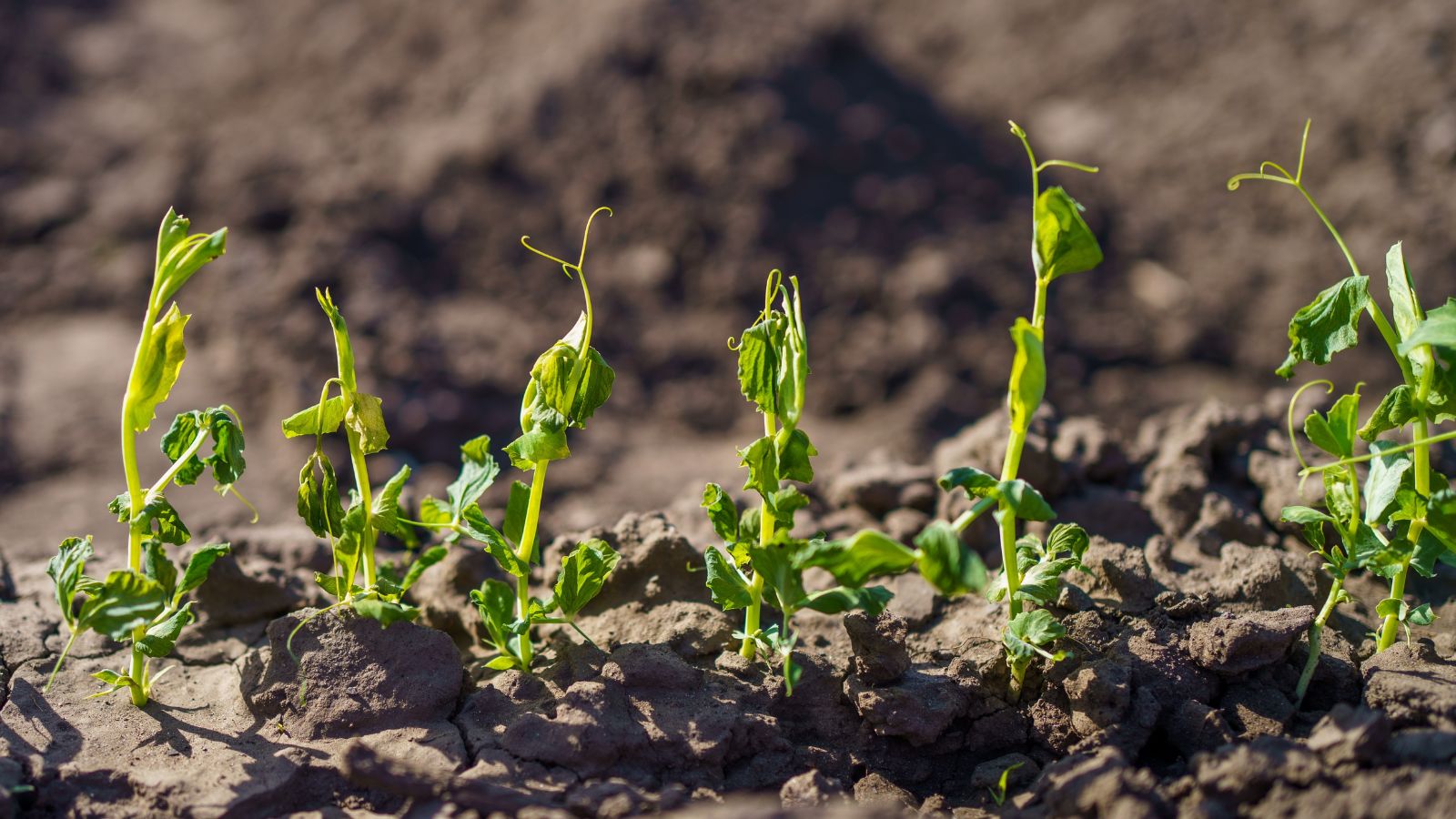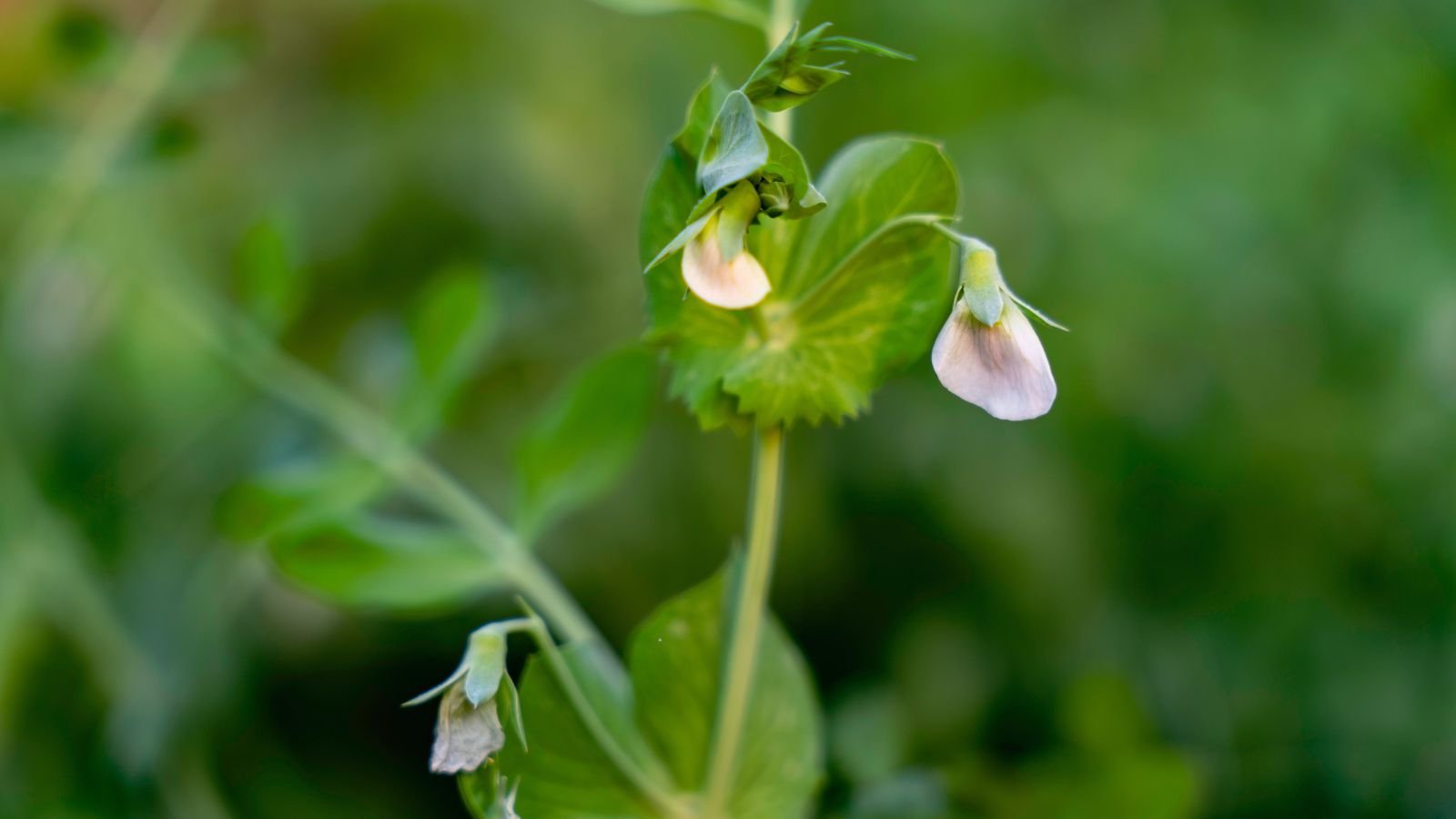PROTECT YOUR DNA WITH QUANTUM TECHNOLOGY
Orgo-Life the new way to the future Advertising by AdpathwayPlanting the same seeds more than once may sound foolish, but it’s actually an expert growing trick! It’s a process known as succession planting, in which you plant seeds consecutively for long harvest periods. Instead of having your peas grow, produce, and die in early summer, you can plant another round in July.
If you truly want to maximize your pea production, you’ll plant seeds every two weeks from early spring until early July. These legumes prefer cool, moist weather. They thrive in spring, and again in fall when the weather cools and rain falls.
Some lucky growers in mild climates can grow peas in the winter! If your region lacks significant frosts in winter, try planting the seeds in fall, winter, and spring. If your summers are hot, avoid planting in summer.
Wando Shelling Pea

Sugar Snap Snap Pea

Sugar Snap Snap Pea Seeds
Oregon Giant Snow Pea

5 Reasons to Plant More Peas in July
So, should you plant peas this July? Whether to plant them or not depends on your climate and the garden’s conditions. Here are five reasons why you should plant them this July.
Peas Are Delicious
 We all want tasty veggies to add to our garden, and these pods pack in the flavor and texture.
We all want tasty veggies to add to our garden, and these pods pack in the flavor and texture.Peas are delicious! This is, perhaps, the most important reason to grow them. They’re essential in the vegetable garden. If you like fresh pea pods, shelled peas with butter, or split pea soup, you should grow more of these leguminous veggies.
Not only are they easy to grow, but they’re versatile, too! Use peas in soups, cook them alone as a side dish, or freeze them for a later date.
If you don’t like these veggies, I urge you to try growing them yourself. Try a new, sweet variety like ‘Patio Pride.’ Once you taste homegrown peas, you’ll love them! If you don’t like them, you’ll have plenty to give away to neighbors and family.
You Want More Variety
 The two main categories are shelling peas and snap peas.
The two main categories are shelling peas and snap peas.There’s more than one pea type you can grow. There are snow, snap, and shelling peas. Let’s say you grew snow pea varieties in early spring. Now, after tasting those, you might be ready for snap varieties!
Which type is best for you depends on your preferences. Snow peas grow edible pods that you harvest when the pea seeds inside are tiny. Snap pea varieties similarly sprout edible pods, though you harvest them when the pea seeds inside are plump and tender.
Shelling types are the classic pea varieties. They don’t grow edible pods; instead, they sprout plump peas inside that you shell from the pods. They require some work to process, though their flavor, texture, and tenderness are unmatched by the previous two types.
If you have the space, consider planting all three varieties this July! The pea plants tend to grow up rather than out, and you can fit many in the home garden. Plant them close together and train them up trellises or stakes.
The First Planting Failed
 If your early planting failed, you can easily grow more before the season is done.
If your early planting failed, you can easily grow more before the season is done.You may want to plant peas again in July if your first crop failed. Sometimes, rapidly rising spring temperatures or harsh late frosts can prevent the first pea planting from thriving. Maybe they grew tall but never sprouted flowers or pods, or slugs ate the seedlings before they could mature.
No matter the reason for pea heartbreak, you can correct these issues by planting another round. Slugs grow less active as temperatures rise and moisture levels fall, and the pea seeds will quickly germinate under summer’s heat.
To bolster your chances of success, ensure the soil stays moist throughout the germination period. This will prevent the seeds from drying out and keep them cool while they sprout.
The Plants Stopped Producing
 Don’t worry if your plants stop producing when it gets hot, you can always sow more seeds.
Don’t worry if your plants stop producing when it gets hot, you can always sow more seeds.Pea plants may stop producing flowers and pods once the weather warms in late spring and early summer. High temperatures above 85°F (29°C) are too hot! The leaves will begin to yellow and wither, and the flowers will fall off.
Sometimes, the weather is odd in spring! You may have a week of hot temperatures, followed by cool, wet weather. The sudden shift from cool to hot can shock the pea seedlings and prevent them from properly maturing. Late frosts can also prevent pea flowers and pods from forming.
If temperatures are hovering below 85°F (29°C) in July, you can plant a second round. They’ll quickly mature under the warmth of summer. If you have a short growing season, you may plant them in July for a fall harvest.
You Have A Cool Growing Season
 Colder zones are great for growing these legumes.
Colder zones are great for growing these legumes.Gardeners in cold zones may struggle to grow tomatoes and peppers, though they should have no problem growing peas! These cool-weather lovers perform best in regions with long, mild springs that slowly shift into summer.
If you’re growing season is short and autumn arrives early, planting the seeds in July will give you a fall harvest. In areas with long summers, planting in July may give you an early summer crop before the hottest temperatures arrive.
If it’s July 1st and the weather is above 85°F (29°C), it may not be a good idea to plant pea seeds. Grow beans instead, then plant them once the weather begins to cool in late summer and early fall. Peas thrive alongside carrots, beets, and mâche.
Key Takeaways
- If at first you don’t succeed, try, try again! If your first pea crop failed, try planting another round this July.
- Peas love cool weather. Plant them if the daily temperatures are below 85°F (29°C), on average.
- Three main types exist: shelling, snow, and snap. Choose your favorite!
- Succession planting is an excellent way to extend your harvests. It works with peas, but it is also helpful for leafy greens, root crops, and annual herbs.
- Once your crops finish producing, replace them with heat-loving beans to enjoy more leguminous veggies.
Frequently Asked Questions
No, they don’t! If you garden in a hot climate, consider trying heat-resistant pea varieties like ‘Wando’ or ‘Sugar Snap.’
Yes! If the weather is accommodating and you have the space, you can absolutely plant them this July.
The plants will drop their flowers and pods when temperatures rise above 85°F (29°C). Choose heat-tolerant varieties, or consider waiting to plant them until late summer and early fall.


 1 week ago
15
1 week ago
15





















 English (US) ·
English (US) ·  French (CA) ·
French (CA) ·